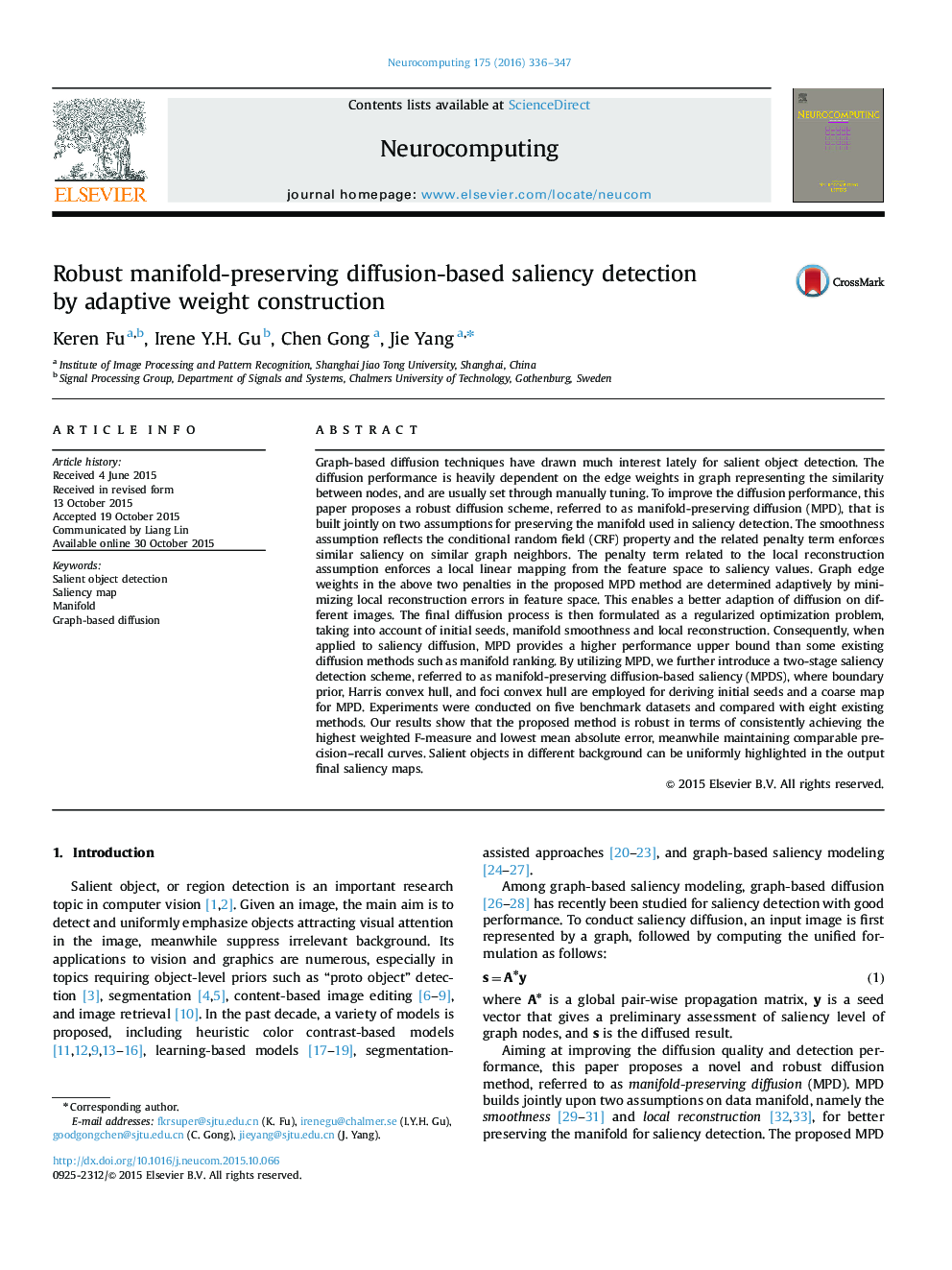| Article ID | Journal | Published Year | Pages | File Type |
|---|---|---|---|---|
| 407165 | Neurocomputing | 2016 | 12 Pages |
•We propose manifold-preserving diffusion (MPD), which jointly exploits the smoothness assumption and local reconstruction assumption on the manifold.•The two types of graph edge weights in our method are determined adaptively through minimizing local reconstruction errors.•MPD guarantees a much higher performance upper bound. We introduce a two-stage saliency detection scheme called MPDS that leverages MPD. We obtain superior performance to state-of-the-art methods on saliency detection.
Graph-based diffusion techniques have drawn much interest lately for salient object detection. The diffusion performance is heavily dependent on the edge weights in graph representing the similarity between nodes, and are usually set through manually tuning. To improve the diffusion performance, this paper proposes a robust diffusion scheme, referred to as manifold-preserving diffusion (MPD), that is built jointly on two assumptions for preserving the manifold used in saliency detection. The smoothness assumption reflects the conditional random field (CRF) property and the related penalty term enforces similar saliency on similar graph neighbors. The penalty term related to the local reconstruction assumption enforces a local linear mapping from the feature space to saliency values. Graph edge weights in the above two penalties in the proposed MPD method are determined adaptively by minimizing local reconstruction errors in feature space. This enables a better adaption of diffusion on different images. The final diffusion process is then formulated as a regularized optimization problem, taking into account of initial seeds, manifold smoothness and local reconstruction. Consequently, when applied to saliency diffusion, MPD provides a higher performance upper bound than some existing diffusion methods such as manifold ranking. By utilizing MPD, we further introduce a two-stage saliency detection scheme, referred to as manifold-preserving diffusion-based saliency (MPDS), where boundary prior, Harris convex hull, and foci convex hull are employed for deriving initial seeds and a coarse map for MPD. Experiments were conducted on five benchmark datasets and compared with eight existing methods. Our results show that the proposed method is robust in terms of consistently achieving the highest weighted F-measure and lowest mean absolute error, meanwhile maintaining comparable precision–recall curves. Salient objects in different background can be uniformly highlighted in the output final saliency maps.
